1. 引言
埃博拉是一种罕见的和致命的病毒菌株之一。在过去的几年中,埃博拉病毒已经对人们的生活造成了极大的威胁。根据世界卫生组织的消息,2014年1月以来,埃博拉疫情在西非的几内亚、塞拉利昂和利比里亚持续扩散,导致病例已超过13,855例[1] 。埃博拉在在全球及西非的疫情分别显示在是在图1和图2中。为了有效地控制埃博拉疫情,我们建立SIR-L传染病模型来分析埃博拉病情的发展趋势,估计所需药物和疫苗数量,并设计了可行的药物分配网络。在本文中,我们所用的统计数据来自几内亚,利比里亚和塞拉利昂等埃博拉疫情传播严重的地区。
2. 必要说明
2.1. 假设
1) 忽略各类人群的自然出生率和自然死亡率,即人口总数保持固定 ;
;
2) 没有迁入迁出及其他原因引起的死亡;
3) 假设患传染病后通过治好的人,都具有长期的免疫力,即患者治愈恢复后不再被感染;
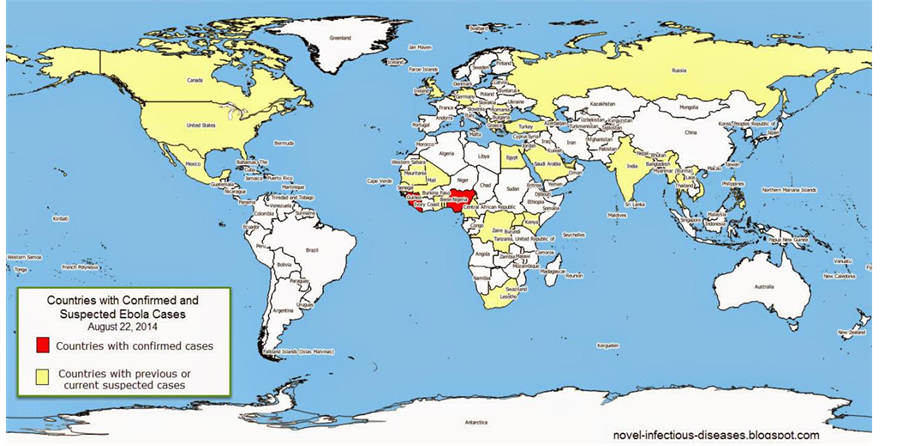
Figure 1. Geographic distribution of Ebola virus disease
图1. 埃博拉疫情在全球分布

Figure 2. 2014 West Africa Ebola virus outbreak situation map
图2. 埃博拉疫情在非洲分布
4) 单位时间内感染的人数与现有的感染者成比例;
5) 单位时间内治愈人数与现有感染者成比例;
6) 单位时间内死亡人数与现有的感染者成比例;
7) 忽略人群迁移的影响;
8) 不考虑埃博拉病毒变异的影响;
9) 为提高应急物资的救援效率,按照现代物流混合配送和共同配送的思想,将新型药物和疫苗一起分配;
10) 在组织物资配送时,疫区的物资净需求量(实际需求量-原有储备量)、生产点的产量和配送中心原有的物资储备量,这些信息通过应急物流信息系统的运作巳经及时获得,而且配送中心和疫区的物资(新型药物、疫苗)储备量初始值均为0;
11) 由于应急物资分配决策目标和决策主体的特性,救援组织能够调度充足的军事和民用设备实施配送,所以应急配送中心的物资处理能力均能满足需求;
12) 应急物资运输方式有车辆运输、航空运输等,根据应急物资分配决策目标,选择何种方式时只考虑其响应时间。
2.2. 符号定义
在物资分配网络中,我们有以下的符号定义,见表1。
3. 埃博拉疫情的分析
3.1. SIR动态模型的建立
我们把居民分成易感者(S),传染者(I)及移出者(R)三类,分别记作 ,
, 和
和 ,三者之和保持常数N [2] 。
,三者之和保持常数N [2] 。
表1. 符号定义
累积病例数为L。
当地预防及治疗效果指数为k。
病人的周接触率为λ。
周治愈率为μ。
传染期接触率为 。
。
 (1)
(1)
SIR-L传染病模型
 (2)
(2)
又有
 (3)
(3)
公式(3)中我们引入预防及治疗效果指数k来反映疾病控制程度,它直接影响埃博拉的流行趋势、疫情高峰期及累计发病人数。
对(3)求解得等式(4):
 (4)
(4)
其中,记 为预期传染病发病总人数,即理论上最多累计发病人数,且
为预期传染病发病总人数,即理论上最多累计发病人数,且 时所对应的时间为疫情扩散高峰期。依据相关数据并按所建模型拟合,可得表2中的拟合系数,结果见图3。
时所对应的时间为疫情扩散高峰期。依据相关数据并按所建模型拟合,可得表2中的拟合系数,结果见图3。
为了检测我们的模型是否较好地反映各地区的实际情况、具有普遍意义,我们又以塞拉利昂和利比里亚为例,对模型进行了验证,结果分别见图4、图5。
以上两个地区的模型拟合结果与实际非常接近。为了更进一步证明该模型对疫区发病情况的拟合程度,我们引入决定系数R2作为检测标准。

表2. 拟合系数
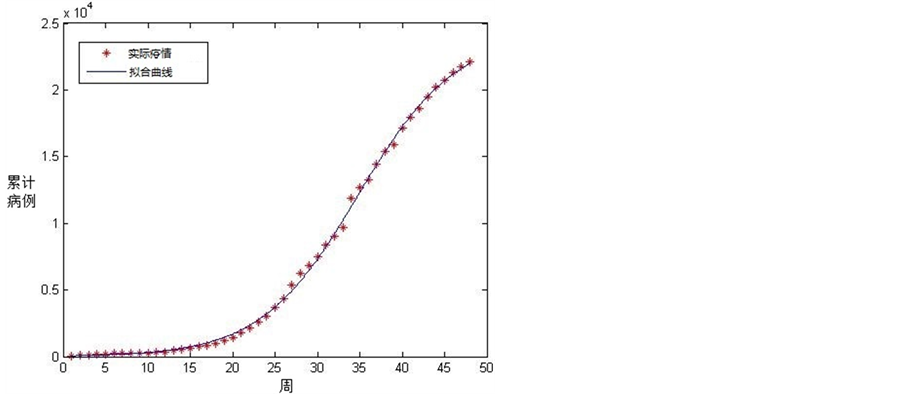
Figure 3. The growth curve of speed in Guinea
图3. 疫情在几内亚增长趋势
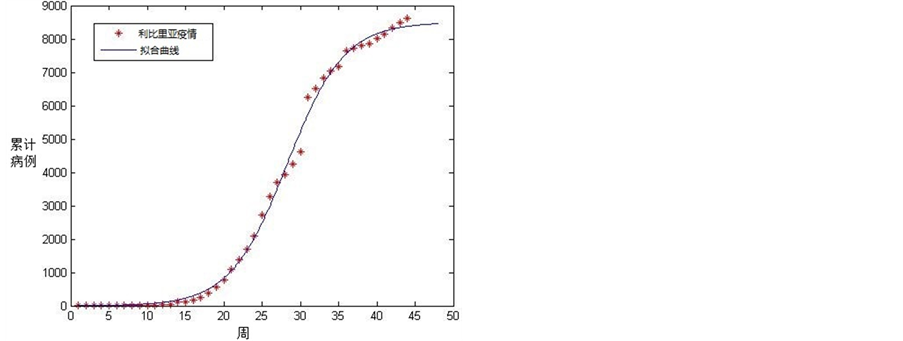
Figure 4. The growth curves of Ebola cases in Liberia
图4. 疫情在利比里亚增长趋势
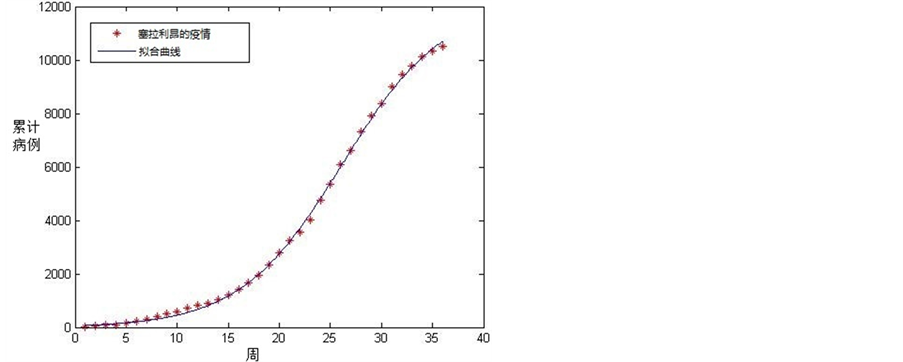
Figure 5. The growth curves of Ebola cases in Sierra Leone
图5. 疫情在塞拉利昂增长趋势
其中SSE表示残差平方和,SST表示总的平方和,经过计算,两地区模型决定系数R2均高于0.99,预测值与真实值非常接近,拟合优度检验无显着性差异,说明此模型较好的描述了埃博拉的发病、扩散情况,适用于埃博拉疫情的拟合及传播特征研究。从医学角度来讲,对埃博拉疫情采取相应的预防措施(如消毒、隔离)后,病例数有所下降,说明预防措施与该疾病的扩散发展密切相关。
3.2. 模型分析
根据前述内容,进一步分析 ,
, 和
和 的变化情况。模型中前两个方程与
的变化情况。模型中前两个方程与 无关,所以可以从前两个方程求出
无关,所以可以从前两个方程求出 与
与 之间的关系[3] 。
之间的关系[3] 。
考虑
 (5)
(5)
消去 ,得一阶方程
,得一阶方程
 (6)
(6)
解此方程得:
 (7)
(7)
由(1)式和(2)式的解得
 (8)
(8)
取 得泰勒展开式的前三项,移出人数变化率近似地等于
得泰勒展开式的前三项,移出人数变化率近似地等于
 (9)
(9)
在初始值 下得到其解为累计移出人数:
下得到其解为累计移出人数:

其中

所以,(9)式可以转化为
 (10)
(10)
因为 ,所以有
,所以有 。
。
记 ,
, ,
, ,下面根据(5)式、(7)式分析
,下面根据(5)式、(7)式分析 ,
, 和
和 的变化趋向。
的变化趋向。
1) 不论初始条件 ,
, 如何,
如何, ,即病人终将被治愈或者死亡。
,即病人终将被治愈或者死亡。
2) 最终未被感染的健康者的比例是 ,在式(7)中令
,在式(7)中令 ,得到
,得到 是方程
是方程 在
在 内的根。
内的根。
3) 若 ,当
,当 时,
时, ,
, 增加;当
增加;当 时,
时, ,
, 达到最大值
达到最大值 。
。
4) 若 ,
, ,
, 单调减小到0,
单调减小到0, 单调减小至
单调减小至 。
。
SIR模型的(6)式可写作 ,
, 。由后一方程知
。由后一方程知 ,
, 单调减少。
单调减少。
当 ,
, ,
, 单调减小至
单调减小至 。就是说,如果仅当感染者比例
。就是说,如果仅当感染者比例 有一段增长时期才认为传染病在蔓延,则
有一段增长时期才认为传染病在蔓延,则 是一个阈值,当
是一个阈值,当 时传染病会蔓延。
时传染病会蔓延。
减小传染期接触数 ,使得
,使得 ,传染病就不会蔓延。注意到人们的卫生健康意识水平越高,周接触率越小,医疗水平越高,周治愈越大,所以提高卫生和医疗水平是控制传染病蔓延的有效途径。
,传染病就不会蔓延。注意到人们的卫生健康意识水平越高,周接触率越小,医疗水平越高,周治愈越大,所以提高卫生和医疗水平是控制传染病蔓延的有效途径。
4. 对药物需求量的预测
在上述模型中,我们已经对未来各个国家和各个地区的埃博拉患者进行了预测,预测结果见表3和图6,由此可以预测针对患者的药物需求量。
5. 对疫苗需求量的确定
预防接种是预防控制相关传染病的最经济、最有效、最方便的手段。预防接种疫苗需求量预测,是

Table 3. The weekly expected increase cases
表3. 西非三国未来十周疫情预测

Figure 6. The expected new cases in the next ten weeks
图6. 三个国家未来10周新增病例预测
确保充足疫苗供应的基础。在常规免疫以及其他特殊免疫活动的管理中起着决定性的作用[4] 。疫苗需求量预测的目的,是通过估算预防接种所需疫苗的数量,综合协调管理相关资源,使疫苗的需求与供给达到动态平衡。需求量随着具体情况的不同变化较大,因此预测的准确性极其重要。低估需求将导致疫苗短缺,接种率降低,无法形成免疫屏障。而高估需求则会导致库存量过大,疫苗浪费,成本增加。目前,预防接种疫苗供应的剧烈波动不能被客观科学地预测,如何预测疫苗需求量使其既满足实际需要,又不造成浪费,至关重要[5] 。疫苗需求量预测分为单一年度预测和多年度预测(通常为3~5年)两种方式,这里我们仅仅进行单一年度的预测。疫苗需求量预测需综合考虑政策、目标人群的规模、疫苗损耗情况、储存和供应能力、第二类疫苗的替代及免疫覆盖率等方面。
依据目标人口的规模估算:利用目标人口数、每剂剂量、免疫覆盖率与损耗系数等指标进行预测[6] 。
我们采用WHO推荐的方法。

其中,M是疫苗需求量,P是目标人口数,n指全程接种剂次数,i指接种第i剂,c是损耗系数,目标人口数依据总人口数与不同年龄组所占的比例计算,且不同的免疫活动其目标人口数不同。适用于不同免疫接种活动中所有疫苗的估算。对于突发传染病的疫苗需求量,更适合用WHO给出的公式,因此我们采用上述公式计算免疫量。
6. 配送中心的选择
应急物流是以提供突发性自然灾害、突发性公共卫生事件等所需应急物资为目的,以追求世界效率最大化和灾害损失最小化为目标的某种特殊的应急物资调度活动。物流中心选址是物流系统规划中的一个重要问题,其主要指在一个具有若干需求点和物流中心的区域内,选择一个或多个地址设置物流中心,从而使既定目标得以最大实现的过程。物流中心的设置需要配套的建筑物、设备、人员和物资,通信企业应急物流中心选址理论分析如果选址不当,可能会产生较大的经济损失,造成一定的负面影响,因此,在物流中心选址过程中需要对选址问题进行全面、细致的考虑。与此同时,物流中心选址影响到了整个物流系统的运行效率,良好的物流中心选址对于降低费用,节约运营成本也具有极其重要的作用
构建区域应急物流网络时,我们将应急医药品区域划分成若干个应急区域,考虑到各个国家之间和国家内部不同行政区划内部的统一和管理,我们把三个国家分为一级区域,国家内部按照县或洲分为二级区域,以实现区域物流网络的完全覆盖,易于应急任务的管理。
6.1. 配送中心的选择方法
我们在选择配送中心时,该中心的地理位置选择需要满足在进行应急物流配送时的时效性,并使得总运输周转量最小。
连续区域的单个物流中心选址的主要方法是重心法,但一般的基于重心法的选址模型没有考虑应对不同突发事件的物流需求的不确定性,不符合应急物流配送中心规划的实际情况。基于一般单个连续型物流中心的重心法选址模型,考虑不同突发事件情景的发生概率及该情景下的不确定需求,将不确定需求用区间灰数表示,构建了多情景下不确定需求的应急物流配送中心选址模型,为应急物流网络规划提供了理论依据[7] 。
灰色系统理论,是一种研究少数据、贫信息不确定性问题的新方法。灰色系统理论以“部分信息已知,部分信息未知”的“小样本”、“贫信息”不确定性系统为研究对象,主要通过对“部分”已知信息的生成、开发,提取有价值的信息,实现对系统运行行为、演化规律的正确描述和有效监控。灰色系统确是按颜色命名的。我们用“黑”表示信息未知,用“白”表示信息完全明确,用“灰”表示部分信息明确、部分信息不明确[8] 。
在药品供应中,许多意料之外的变数可能会导致额外的物流需求,甚至会使应急药品的主要任务和目标发生重大变化。因此我们在普通的重心计算方法上,引入灰色系统理论的思想。
选择的国家:
我们考虑病情最严重的三个国家,即几内亚、利比里亚、塞拉利昂,几内亚分为8个大区,大区之下设有34个省。利比里亚全国有15个县。塞拉利昂行政区划把全国分为3个省和1个区,3个省之下设有12个行政区,1个区之下设有2个行政区。所以我们将几内亚分为34个区域,利比里亚分为15个县,而塞拉利昂则分为14个行政区。
我们选择每个国家适当的某个地区作为各个国家的物流中心。这个地区的选择是基于药物和疫苗的需求以及地理距离。并在应急物流区内再选取合适地点建立应急物流配送中心。
6.2. 配送中心选择的过程
如上所述,我们在重心法的基础上,引入灰色系统理论的思想,即确定药品和疫苗两种货物在配送中心的选择中所占的权重,必要的补充说明见表4,具体选择过程如下:
设

其中 是这三个国家内各个区的人口,
是这三个国家内各个区的人口, 是各个国家的人口,a和b分别是疫苗需求和药物需求的权重。
是各个国家的人口,a和b分别是疫苗需求和药物需求的权重。
6.3. 配送中心选择结果
根据公式(11),得到利比里亚,塞拉利昂,几内亚三个国家各自的物流分配中心分别是River Cess [5.974; −9.459;],Bo [7.958937; −11.741123;],Mamou [10.387701; −12.083416;],这三个国家的分配中心中,选择Bo城作为第一级分配中心(如图7所示)。
7. 三级节点应急物资分配网络
应急决策研究是国内外管理学研究中一个新的研究方向,大概已有三十年研究历史,从应急决策理论到应急决策方法越来越受到研究者的关注,也有了比较丰硕的成果。应急系统一般包括应急救援体系建设、应急预案编制技术、应急预案评审技术、应急学习与评价技术和应急决策支持系统等关键技术,在作为技术核心的应急决策支持系统中,应急物资分配是关键。
结合利用前人的理论方法研究,并参照现代企业物流系统的运作经验,建立适用于当前埃博拉疫情的应急物资决策分配模型——三级节点网络应急物资分配决策模型[9] 。我们将每个国家的省会城市作为该网络的三级节点,将前文确定的三个国家的医药品配送中心作为该网络的二级节点,将疫情最严重的国家对应的配送中心作为一级节点,并在该节点设立生产中心,该生产中心通过一级节点向下级节点配送医药品。
表4. 补充说明

Figure 7. The major cities and centers in Ginea, Sierra Leone, Liberia
图7. 几内亚、塞拉利昂和利比里亚的主要城市和加权重心
7.1. 网络建立原则
不同阶段有不同的决策分配原则,即疫情爆发初期的时间最短原则及后期的成本最小原则。疫情爆发后最重要的事情是以最有效的方式来减少生命损失,在救援过程中成本目标往往成为次要目标,而如何在保证控制埃博拉疫情发展的前提下,使应急物流系统的损失达到最小是应急物资分配的基本原则。
在由于供给短缺或运力限制造成疫情无法全部被扑灭的情形下,应考虑如何通过全局优化保证不同疫区物资分配的相对公平性。
救灾效果不仅取决于疫区实际得到救助的应急物资的数量,还取决于其得到救助的时间,如果送达疫区的时间超出了其配送极限时间,这样的配送是没有任何效果的,所以应急物资分配决策应考虑配送极限时间约束。
7.2. 物资分配过程
根据前述思路我们建立了应急物资配送决策模型,并根据模型特点提出了改进策略。
我们设计的应急物资分配决策系统是一个由多步骤组成的动态闭环循环系统。在每一个决策周期内,应该包含完整的决策四阶段[10] :
第一阶段,收集疫情相关信息,以及类似应急救援案例,做出埃博拉疫情传播扩散模型。在此基础上进行物资需求预测和疫区的需求紧迫性识别,并收集应急物资储备、灾区路况等信息;
第二阶段,建立物资分配模型和研究模型算法,选择决策方案;
第三阶段,决策主体对方案进行评价;
第四阶段,按照通过评价的方案实施分配。
应急物资分配决策是一个复杂的动态过程,从动态角度对应急物资分配决策进行分析,有利于增强应急物资管理的针对性和可操作性。因为在紧急情况下物资分配决策者往往是处于信息和资源均不完备的状态下作出决策,在这种时间有限、压力很强的状态下作决策时,往往很难找到最佳方案,这时需要选择“满意方案”,并且要求决策者根据情况变化灵活应对。在灾害事件下,轻灾区和重灾区会随着事态的发展而相互转化,决策者需要及时调整物资配送方案[11] 。
按照西蒙的决策理论[12] ,任何决策过程应遵循完整的四阶段理论,即“情报活动、设计活动、抉择活动、审查活动”。根据这一理论,可以设计出应急物资分配决策的动态过程如图8所示。
7.3. 模型网络构建
我们以各国家的省会城市作为该网络的第三级节点,并确定三个国家作为网络的二级物资配送节点,同时以受灾最严重的国家为一级节点和新型药物疫苗生产中心。在这种模式下,一级节点可以分配物资到下层节点。三级节点网络应急物资分配模型得以实现,如图9。
综上得到应急物资分配决策数学模型:
 (12)
(12)
 (13)
(13)
 (14)
(14)
 (15)
(15)
 (16)
(16)
 (17)
(17)
 (18)
(18)
 (19)
(19)
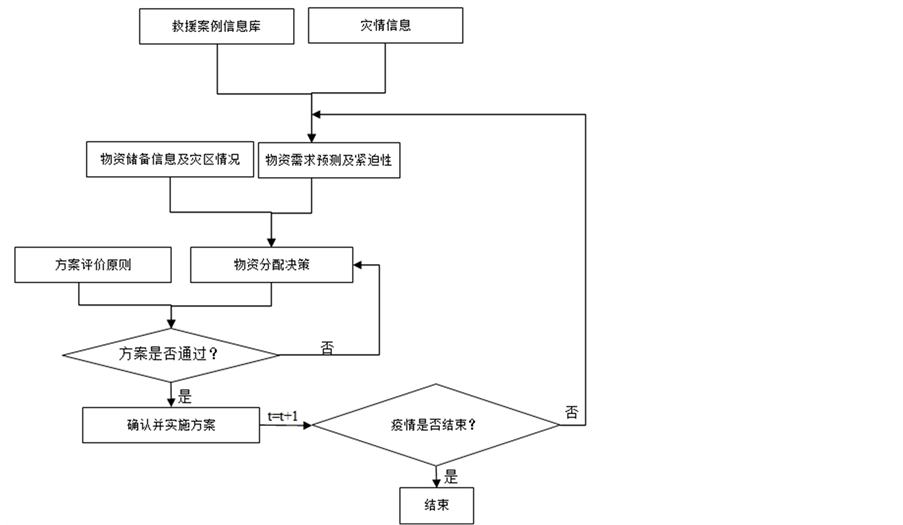
Figure 8. Emergency materials allocation decision flow chart
图8. 应急物资分配决策流程图
 (20)
(20)
 (21)
(21)
 且为整数。
且为整数。
上述式中 ;
; 。
。
该模型是同时具有整数规划(IP)问题和非线性规划(NLP)问题难度的整数非线性规划(INLP)模型,因此我们可以使用改进的粒子群优化算法寻求模型的解决方案。
解决步骤:
① 为了确保粒子群的优化目标是目标函数最大化,需要在式(12)上添加一个负号,并求它的最大值,即max(−L)。
② 编写程序确定公式(17)到(20)中0~1变量的值。
③ 使用惩罚函数法来处理其他的约束条件,目标函数转化问为式(22)。
 (22)
(22)
④ 在改进粒子群算法时,为了使每个粒子都可以找到有利于快速收敛到全局最优解的学习对象,我们采取既能做D-维空间搜索,又能在不同维度上选择不同学习对象的策略,即全面学习粒子群算法。最后可以使用该改进算法对模型进行求解,其中每个粒子的适应值由式(22)得出。
8. 讨论
8.1. 模型的优点
首先,针对埃博拉疫情我们建立了相应的SIR-L传染病模型,引入预防指数k,并采用Logistic阻滞增长模型对实际情况进行了拟合,从效果来看十分符合实际情况,用医学和数学相结合的知识阐明了埃博拉发展规律扩散规律,拟合结果与实际流行趋势贴近。
其次,根据该模型能够预测埃博拉扩散高峰期的到来时间以及可能累计最大感染者数。这样,我们就可以以此为参考,人为的来改变一些参数或控制一些相关因素,从而达到预防疾病的传播与蔓延效果,如:加强消毒,控制人口流动等措施均可以增大k,从而可以使实际高峰期累计病例数降低,同时为我们后面要研究讨论的第二个模型——后期的药物和疫苗生产输送工作减轻压力,具有很强的实用性。
第三,结果用拟合图形说明、验证,简洁直观。
8.2. 模型的缺点
尽管我们的预测结果已经相当好,但仍有一些不足。正如题目中特别说明已经有治愈埃博拉的药物,治疗将会成为最有效的手段,而且医源性感染的可能性也会大大。那么,k的意义就不像现在这样明显。而且,根据现有数据进行拟合的模型都具有滞后性,原始数据的精确度会影响到模型的效果。而下一代的关于埃博拉的模型或许应该更复杂,涉及到更详细的随机过程和空间变化、病毒源头、季节因素和多种传染模式,因此,它应该随条件的改变而逐步完善改进。
8.3. 更优模型
埃博拉是流行性传染病,对于传统的流行性病学模型通常假设:平均每个传染者在单位时间内可与βN个种群的其他成员进行有效接触,其中N表示种群的总规模,β为传染性接触率。由此假设所导致的
传染率 是易感染者类S和感染者类I的规模的双线型函数。在对病愈后不具免疫力的传染病模型的研究中,以前疾病的潜伏期都被忽视,假设易感染者一旦被感染就立即变成了患病者。
是易感染者类S和感染者类I的规模的双线型函数。在对病愈后不具免疫力的传染病模型的研究中,以前疾病的潜伏期都被忽视,假设易感染者一旦被感染就立即变成了患病者。
由此假设所导致的传染率是易感染者类S和感染者类I的规模的双线型函数。
其中, 为初始人数,p为感染率,μ治愈率,γ为隔离率,σ为隔离治愈率,d为死亡率,κ为潜伏发病率。于是可以建立如下模型——SEIRQ模型:
为初始人数,p为感染率,μ治愈率,γ为隔离率,σ为隔离治愈率,d为死亡率,κ为潜伏发病率。于是可以建立如下模型——SEIRQ模型:

由于这种模型是建立在对发病后调查分析的基础上,所要算的系数的精确度与调查的数据密切相关。但是对于数据的采集通常只包括存活者,而对于那些已死的感染者,或对病程短且已经痊愈的病例以及对轻型不典型病例或潜伏型病例,我们通常很难调查。此外,某些病人在患病后,可能会改变他原来的暴露状况,如生活习惯的改变等。这样使病例对照研究或横断面研究所采用的病例类型,会与队列研究或实验研究所获得的新病例不同。这就是现患病例——新病例偏倚。而埃博拉刚刚出现时,由于没有引起足够的重视,致使其在很短的时间内就扩散到西非数十个国家和世界上其他个别国家。要统计较为精确的数据,因受人为、地域等因素的影响,其难度可想而知,并且各个地区采取的措施不同,人口流动性不定,所以其预测也会受到限制。加之到目前为止,埃博拉的传染源还未确定,因此对于其他传播途径(动物等),无法做出较为准确的预知。这样使病例对照研究或横断面研究所采用的病例类型,会与队列研究或实验研究所获得的新病例不同。这就是现患病例——新病例偏倚。
8.4. 模型的改进和推广
如果能够将传染源、接触率等因素化为参数考虑进去,甚至提供潜伏期、阈值、恢复期、最多感染人数、易感系数、平均感染人数等参数,则可以进一步完善该模型。并且,若将基因功能组的分析工作进一步扩张到冠状病毒以外与埃博拉相关的病原体中,则对该模型的分析还可以为疫苗和药物的研制和配发提供理论支持。